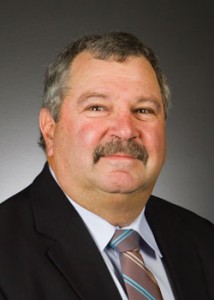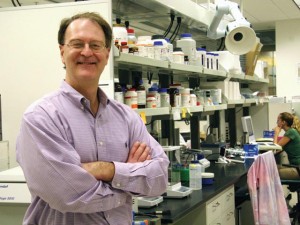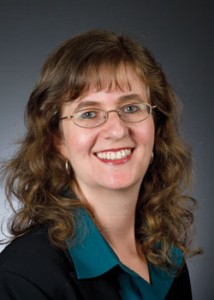
Our research: Sustainability

The central thrust behind sustainability is the capacity of metropolitan areas to grow and prosper without destroying or depleting natural resources. Our research focuses on the dynamics of sustainable systems, including restoring and improving urban infrastructure, access to clean water and clean air, advanced construction techniques and management, environmental fluid dynamics, transportation planning as well as geotechnical and geoenvironmental engineering.
Integrated models for transportation infrastructure
Ram Pendyala, a professor of civil and environmental engineering in the School of Sustainable Engineering and the Built Environment, oversees several graduate students in a research effort to improve the transportation systems in the Phoenix Metro area.
The focus of their research is to integrate three different model systems that will forecast traffic on roadways and the demand of public transportation systems. These models will also assist with analyzing transportation policies and scenarios to make transportation more sustainable.
The graduate students working under Pendyala have worked in a team effort to develop, test and run the software for the model systems. One of the systems is a simulation of the intersection where the Loop 202 meets the Loop 101 on the border of Tempe and Mesa, Ariz. The simulation displays the exact movements of the individual vehicles on the road. This technology can be used to see where and when bottlenecks or congestion occur at the intersection.
For his efforts in advancing transportation systems, Pendyala has been awarded a grant by the Federal Highway Administration of the U.S. Department of Transportation under its Exploratory Advanced Research Program. Model systems such as these will greatly benefit the Phoenix metropolitan area as the cities grow. With the increasing population, officials will have to try and advance public transportation systems and make transportation more sustainable. The model systems that Pendyala and his team of researchers have developed can greatly assist these efforts.
Rittmann named IWA Fellow
Bruce Rittmann, professor in the School of Sustainable Engineering and the Built Environment, has been named a Fellow of the International Water Association. The IWA is a global network for engineers, scientists and other professionals in the water resources field. The IWA consists of more than 10,000 members including researchers, utility managers, consultants, industry representatives, health regulators and equipment manufacturers.
As a Fellow, Rittmann will have opportunities for collaborations with other leading IWA members.
Rittmann is an ASU Regents’ Professor of Environmental Engineering, a Distinguished Sustainability Scientist with ASU’s Global Institute of Sustainability and director of the Swette Center for Environmental Biotechnology at ASU’s Biodesign Institute.

Alexander Baish, a doctoral student in civil, environmental and sustainable engineering, at work in Mexico with partners in the Water Innovation Consortium.
Urban development in Mexico
Monterrey is a budding city in Mexico that has a promising future with a large obstacle to overcome. The infrastructure that currently provides quality water to the four million inhabitants of Monterrey is not prepared for the influx of demand that will ensue from economic growth. This year, researchers at Arizona State University and Mexico’s Monterrey Institute of Technology and Higher Education (Tec de Monterrey) formed the Water Innovation Consortium to do the groundwork for a modern and sustainable water resources management system for the city and its suburbs.
Enrique R. Vivoni, an associate professor in both the School of Sustainable Engineering and the Built Environment and the School of Earth and Space Exploration, is a leader of the consortium—one of several sustainability projects Vivoni is conducting in Mexico.
Among the most critical of those challenges are ensuring access to an adequate water supply and the safety of that water, and providing extensive flood protection. The need for the latter became dramatically more clear when a rampaging flood resulting from Hurricane Alex pummeled the region.
Part of the research being done involves simulations that account for the topographical, environmental and meteorological conditions that made the area so susceptible to flood waters. The researchers have chosen Hurricane Alex of 2010 as a model to simulate the floods and their effect.
The flood of Hurricane Alex brought a great deal of destruction to the city itself, tearing up roadways, destroying bridges and burying cars. Efforts are also being made in regards to urban planning and natural resources development planning. The work involves the use of hydrological models to serve as a guide for designing and constructing systems to protect the area from such damage, and engaging in the public policy aspects of solving a city’s problems.
The project is one of ASU researchers’ pioneering efforts to merge hydrosystems engineering and sustainability planning.
“Our goal is to help improve the decision-making that will shape the futures of developing countries,” Vivoni says.

Edward Kavazanjian received the 2011 Karl Terzaghi Award from the Geo-Institute of the American Society of Civil Engineers
Kavazanjian recognized by ASCE
Edward Kavazanjian, professor in the School of Sustainable Engineering and the Built Environment, received the 2011 Karl Terzaghi Award from the Geo-Institute of the American Society of Civil Engineers. Awarded every other year, this prestigious career honor is presented for outstanding contributions to knowledge in the fields of soil mechanics, subsurface and earthwork engineering, and subsurface and earthwork construction.
Kavazanjian was cited “for application of the principles of soil mechanics to the quantification of the properties of municipal solid waste and the analysis and design of solid waste landfills.”
Kavazanjian’s expertise includes geotechnical engineering for infrastructure development and design of waste containment systems, with a focus on their seismic design. He is co-author of guidance documents on Geotechnical Earthquake Engineering for Highways for FHWA and Seismic Design for Municipal Solid Waste Landfill Facilities for the EPA. Kavazanjian has delivered keynote addresses and state of the art papers on seismic design of landfills, the durability of engineered barriers, and the mechanical properties of municipal solid waste. He currently serves on the National Research Council committee on Assessment of the Performance of Engineered Barriers and the Board of Governors of the ASCE Geo-Institute.
NSF CAREER Award for Krajmalnik-Brown
Rosa Krajmalnik-Brown, assistant professor in the School of Sustainable Engineering and the Built Environment, received an NSF CAREER award to help fund research focusing on what microorganisms can be combined to work together in the most effective ways to improve bioenergy generation and environmental decontamination processes. The right combination can lead to teams of microorganisms which can be used in systems that remove contaminants and pollutants from soils and groundwater. These teams have the ability to break down toxic chemical compounds into harmless products.
An example of a situation in which such a process can be used is the cleanup of health-threatening substances such tricholoethylene—commonly called TCE—an industrial solvent used in decades past that has contaminated significant amounts of groundwater in Arizona, particularly in the Phoenix area.





































